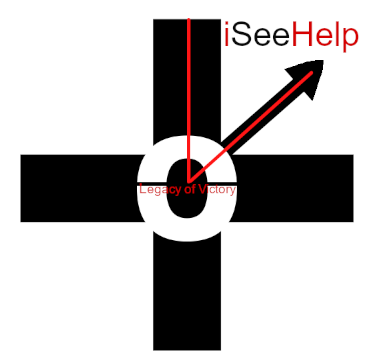Writing Satire, Sarcasm, and Slander
Pay attention to the tension

Decide if you want to write satirically, sarcastically, or slanderously. Definitions matter. Examples matter. Distinctions matter.
Definitions matter
Satire: Satire is a form of humor or social commentary that uses wit, irony, humor, and ridicule to criticize or mock individuals, institutions, or societal issues. Its primary aim is to provoke thought, critique, or commentary on real-world issues. Satire often employs exaggeration and absurdity to make its point. It is typically not intended to harm an individual’s reputation but to highlight flaws or problems in society.
Sarcasm: Sarcasm is a form of verbal irony in which a speaker says the opposite of what they mean, often with the intent to mock, ridicule, or express contempt. It’s usually delivered in a cutting or mocking tone. Sarcasm can be humorous or hurtful, depending on the context and the relationship between the speaker and the listener.
Slander: Slander is a legal term that refers to making false spoken statements or oral communications about someone with the intent to harm their reputation. It is a form of defamation. Slander involves knowingly making false statements that are damaging to someone’s reputation. It can result in legal consequences if the statements meet the legal criteria for defamation.
Examples matter
Sometimes the definition is not enough to understand the term. Giving examples clarifies the meaning in a concrete way.
Satire:
In 1729 “A Modest Proposal” by Jonathan Swift was published in Ireland. The full title was “A Modest Proposal for Preventing the Children of Poor People from Being a Burden to Their Parents or Country.” Swift satirically suggests that the impoverished Irish could alleviate their economic troubles by selling their children as food to rich gentlemen and ladies. The problem was that some people thought it was a real proposal!
This satirical work was meant to criticize the British policies that were causing hardship in Ireland, particularly the high taxation imposed by the British government. While the essay is a work of satire and not meant to be taken literally, it did shock and disturb some readers at the time, leading them to believe it was a genuine proposal.
Another example of satire is Animal Farm by George Orwell, published in 1946 in the USA. In that book he uses allegory and satire to critique the political systems and revolutions of the 20th century by portraying a group of farm animals (Communist revolution) who rebel against their human farmer and establish their own flawed system of governance. Now it is also a free movie. See how allegorical comparisons satirically reveal truth in historical contexts.
Sarcasm:
The Importance of Being Earnest by Oscar Wilde published in 1895 in England is play is filled with sarcastic humor, particularly through the character of Algernon Moncrieff. Another example is Don Quixote by Miguel de Cervantes in 1599 in Spain. Considered as a classic novel, Sancho Panza, who often uses sarcasm and humor in his interactions with the delusional Don Quixote.
If someone arrives late, and you say, “Oh, great timing!” in a tone that clearly conveys irritation, you are using sarcasm.
Slander:
Because slander is a legal term with false statements, there are many contexts. Slander is also related to gossip. In other words, spreading what is true and negative to damage someone’s reputation is also harmful. Satire and sarcasm, on the other hand, are forms of creative expression and literary devices commonly found in works of fiction, essays, and humor.
If someone spreads false information about a coworker, claiming that they stole company property, and they do so with the intent to harm the coworker’s reputation, it may constitute slander if the statement is false.
Distinctions matter
How can you tell satire from the truth?Distinguishing satire from the truth can sometimes be challenging, especially when satire is well-crafted and convincing. Here are some tips to help you differentiate between satire and factual information:
- Context: Consider the context in which you encountered the information. Satirical pieces are often published in publications or on platforms known for satire and humor, such as The Onion or The Babylon Bee. Checking the source can be a helpful clue.
- Style and Tone: Satire typically employs a humorous, exaggerated, or sarcastic style and tone. Look for elements of humor, absurdity, or irony in the content. If the piece is making you laugh or causing you to raise an eyebrow due to its absurdity, it’s likely satirical.
- Over-the-Top Claims: Satire often includes extreme or over-the-top claims that are not meant to be taken literally. If the content seems too outrageous or absurd to be true, it might be satire.
- Satirical Labels or Disclaimers: Some satirical websites or articles include disclaimers or labels indicating that they are satirical. These can be found in the article’s footer, header, or on the page itself.
- Familiar Satirical Sources: Familiarize yourself with well-known sources of satire in your region or online. If you recognize a source as being satirical, you’ll be better equipped to interpret its content.
- Author or Publication Reputation: Check the reputation of the author or publication. Established satirists or satirical publications often have a history of creating satirical content.
- Critical Thinking: Apply critical thinking skills. Evaluate the content and consider whether it aligns with factual information and logic. Fact-checking can help you determine the accuracy of the claims made.
- Cross-Reference: If you are unsure about the veracity of a piece, cross-reference it with reliable sources to see if the information is corroborated elsewhere. Genuine news stories are typically reported by multiple credible sources.
- Satirical Elements in the Language: Look for satirical language and devices, such as irony, sarcasm, hyperbole, and absurd comparisons. Satire often uses these linguistic tools to make its point.
- Satirical Genres: Recognize different genres of satire, which can include written articles, cartoons, videos, and more. Satirical cartoons, for instance, often exaggerate physical features or portray characters in absurd situations.
Discernment matters
Satire is intended to provoke thought, critique, or commentary on real-world issues, often using humor as a vehicle. Pointing out hypocrisy is convicting as the reality of a lack of integrity is exposed. While satire can be a valuable form of social commentary, it’s important to remain vigilant and discerning when consuming information, especially on the Internet, where misinformation and satire can sometimes be mistaken for factual news.
Satire and slander are distinct concepts with different purposes and implications, but they can sometimes be related in certain contexts. Here’s how they differ and where they might intersect. Satire is a form of humor or social commentary that uses exaggeration, irony, humor, and ridicule to criticize or mock individuals, institutions, or societal issues.
Satire is typically a form of art or expression protected by freedom of speech, and its intent is to provoke thought, critique, or commentary on real-world issues. Satire is generally not meant to harm the reputation of individuals or entities but to highlight flaws, absurdities, or problems in society.
In comparison, slander is a legal term that refers to making false spoken statements or oral communications about someone with the intent to harm their reputation. Slander is typically considered a form of defamation, which can result in legal consequences if the statements are false, damaging, and made with actual malice or reckless disregard for the truth. Slander is not protected by freedom of speech when it involves knowingly false statements that harm someone’s reputation.
Perception is everything
Satire and slander intersect when satire is perceived as slanderous, but they are not the same.
Satirical content can sometimes be misunderstood or taken out of context, leading some individuals to perceive it as slanderous. This perception can arise when the satire is highly critical or mocks specific individuals or groups.
While satire may push boundaries and criticize individuals, it is not slander if the content is clearly satirical and not intended to spread false information about someone. In the eyes of the law, satire is generally protected as a form of free speech.
Satire and slander are distinct concepts, with satire being a form of social commentary and humor, and slander being a legal term related to false spoken statements meant to harm someone’s reputation. However, satire can sometimes be perceived as slander when it involves harsh criticism or mockery, but the legal distinction depends on the intent and factual accuracy of the statements involved.
First do no harm
Medical doctors take an oath to “first do no harm.” In each case of sarcasm, do your words hurt others? Sarcasm cuts, pierces people’s self-worth. Does is help? If not, avoid thinking it. Keep your mouth shut.
For satire, does it help to expose the truth? When does it help? When does it harm?
For slander and gossip, avoid judging. Judging and discernment are related concepts, but they have distinct meanings and implications.
Judging typically involves forming an opinion or making a value-based evaluation about someone or something. It often implies making a critical assessment or passing a judgment, often with a moral or subjective component. Judging can involve forming opinions about a person’s character, actions, or choices, often based on personal beliefs, societal norms, or preconceived notions. It can be subjective and may involve biases, stereotypes, or a lack of understanding.
Discernment, on the other hand, is the ability to distinguish or recognize differences, especially in a more objective and thoughtful manner. Discernment involves making informed, rational, and thoughtful decisions or evaluations. It often implies a deeper understanding and consideration of various factors. It is typically less focused on moral judgments and more on making wise, reasoned choices, such as distinguishing right from wrong or evaluating the merits of different options.
While both judging and discernment involve making assessments or evaluations, judging tends to carry a more subjective, critical, and potentially biased connotation. Discernment, on the other hand, emphasizes the ability to make thoughtful, objective distinctions and wise choices based on careful consideration. It often involves a more nuanced and balanced approach to understanding and evaluating people and situations.
Writing satirically, speaking sarcastically, or slandering others? Watch your words.

